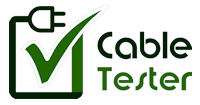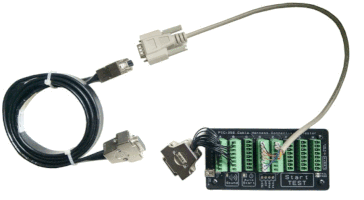Check out these free cable design and management tools to manage your cable documentation and fabrication.
- Cable Design Tool (by Pickering Connect)
- anekonnect
- WireViz
- Rapid Harness
- E3.cable
- HarnWare Software
- WDT Wiring Harness Design Tool
- Unigraphics NX
- Capital
- Harness Builder
- WireCAD
Cable Design Tool
The Cable Design Tool by Pickering Connect is a free, innovative online platform designed to simplify the process of creating custom cable assemblies. This tool is particularly beneficial for engineers and designers looking to streamline their workflow from concept to final product.
Key Features
- User-Friendly Interface: The Cable Design Tool is cloud-based and accessible via modern web browsers, making it easy to use on various devices, including tablets. Its graphics-based design allows users to visualize their cable assemblies in detail12.
- Comprehensive Design Options: Users can customize their cable assemblies with a wide range of options, including:
- Built-in Library: The tool features a library of standard cable sets, enabling users to start their designs from pre-existing templates or create entirely new configurations from scratch. This flexibility enhances the design process and saves time12.
- Expert Support: For users who encounter challenges during the design process, Pickering offers support from experienced engineers. Users can submit semi-completed designs for guidance, ensuring they receive expert assistance when needed26.
Benefits
- Cost-Effective Solution: As a free tool, it eliminates the financial barriers often associated with professional design software. This makes it accessible for businesses of all sizes, from startups to established manufacturers17.
- Streamlined Workflow: The tool facilitates a smooth transition from design to production. Once the design is complete, users can easily submit it for a quote, simplifying the procurement process18.
- Quality Assurance: All products designed through the Cable Design Tool come with a robust three-year warranty, reflecting Pickering’s commitment to quality and reliability. The manufacturing processes adhere to international standards, ensuring that all assemblies meet strict performance and safety regulations17.
Conclusion
The Cable Design Tool by Pickering Connect stands out as an essential resource for anyone involved in cable assembly design. Its combination of user-friendly features, comprehensive customization options, and expert support makes it an invaluable asset for engineers and designers alike. Whether you are looking to create a simple cable assembly or a complex custom solution, this tool provides the resources you need to bring your ideas to life efficiently and effectively.
anekonnect
WireViz
WireViz is an open-source tool designed for documenting cables, wiring harnesses, and connector pinouts. It uses plain text YAML-formatted files as input and generates visually appealing graphical outputs, including SVG and PNG formats. Key features include:
- Automatic Bill of Materials (BOM) generation.
- Support for various wire color schemes and gauge calculations.
- Easy version control due to its text-based input files.
- Compatibility with GraphViz for creating diagrams.
This software is still pretty raw. There is no user interface and to use it, you will need to know how to setup. More technical knowledge is required before you can start to use it.
Introduction
Setting up WireViz
Reference
Rapid Harness
Wiring Harness Software
E3.cable
HarnWare Software
Wiring Harness Drawing Builder
https://www.te.com/en/products/wire-protection-and-management/harness-software-harnware.html
WDT Wiring Harness Design Tool
Unigraphics NX- Electrical Routing/Wiring and Harness (by Siemens)
Capital™ Wiring Designer Essentials and Capital™ Harness Designer Essentials tools
Capital capabilities
Wiring harness design and engineering
https://trias-mikro.de/en/solutions/mainstream-harness-design
Capital Harness XC
https://www.youtube.com/watch?v=1Dr4n6XMHsY
Harness Builder (Zuken)
Simplify Wire Harness Design and Manufacturing

